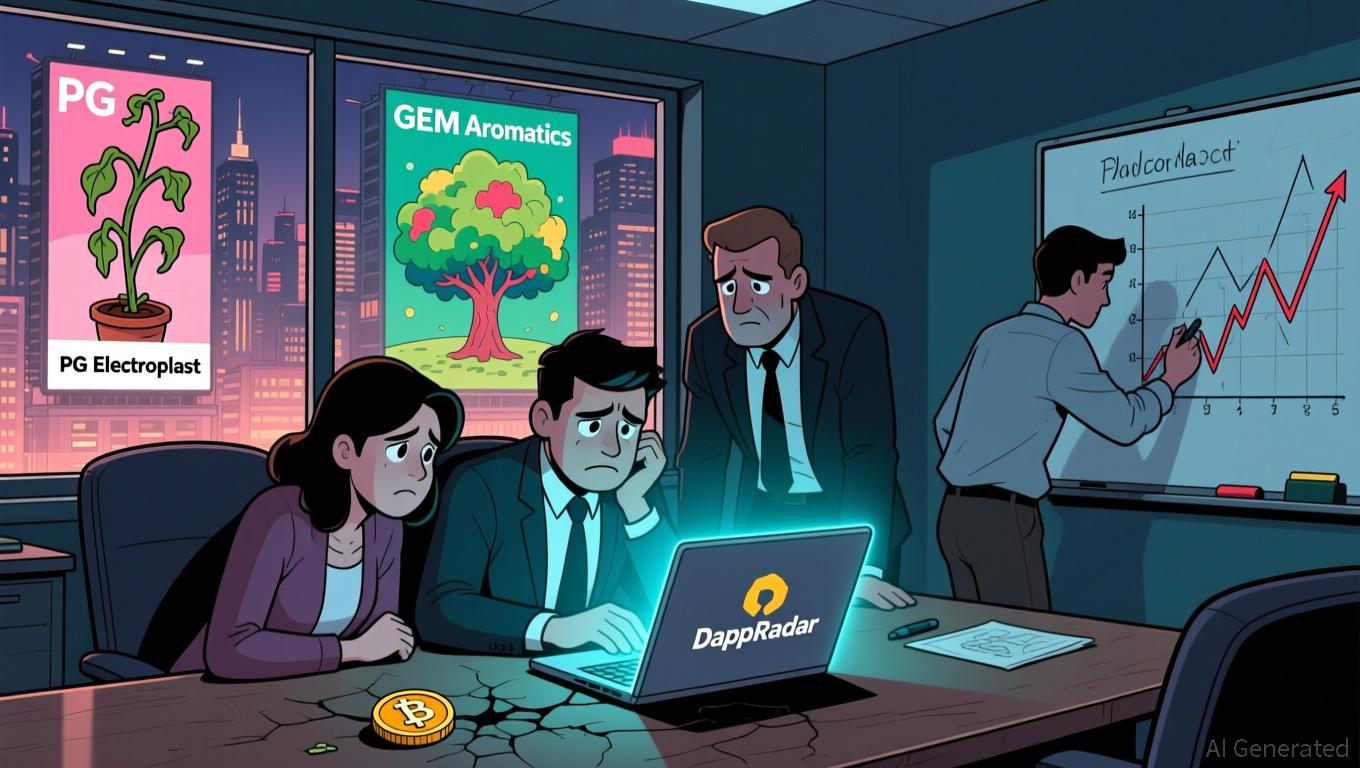Vitalik Buterin's Latest Advances in ZK Technology and Their Impact on the Crypto Ecosystem
- Vitalik Buterin's ZK advancements resolve Ethereum's scalability-privacy trilemma, enabling 43,000 TPS with near-zero fees via GKR protocol. - Kohaku framework introduces modular privacy tools like Railgun, making confidential transactions default for Ethereum wallets. - ZK rollups (zkSync, StarkNet) now hold $3.5B TVL, driven by institutional adoption for RWA tokenization and confidential settlements. - Regulatory clarity and Ethereum's zkEVM integration position ZK as core infrastructure, with 70% lowe
Vitalik Buterin’s ZK Innovations: Advancing Scale and Privacy
Buterin’s research on the GKR protocol has transformed the cost structure of ZK verification. By cutting verification expenses by as much as 15 times in theory and 10 times in real-world scenarios, GKR has empowered platforms like ZKsync to reach 43,000 transactions per second (TPS) with minimal fees
In addition to scaling, Buterin has led efforts to combine ZK proofs with multi-party computation (MPC), fully homomorphic encryption (FHE), and trusted execution environments (TEE). These integrations boost security for solutions like private voting and confidential state queries

ZK’s Journey: From Specialized Use to Institutional Standard
The uptake of ZK technology has surged between 2023 and 2025, propelled by improvements in scalability and growing institutional interest. The Atlas Upgrade for ZKsync in October 2025 delivered 15,000 TPS and seamless Ethereum compatibility, paving the way for real-world asset (RWA) tokenization
The total value locked (TVL) in ZK rollups such as zkSync, StarkNet, and Scroll has now surpassed $3.5 billion, signaling strong institutional trust in ZK’s cost-effectiveness. For example, transaction fees for high-frequency trading on ZK platforms have fallen by 70% compared to 2023
The Ethereum Foundation’s focus on zkEVM integration at the Layer 1 level has further established ZK rollups as the go-to scaling method. Legislative clarity from the U.S. GENIUS and CLARITY Acts has also eased regulatory concerns, setting the stage for ZK rollups to become the backbone of blockchain infrastructure
Investment Outlook: ZK Technologies as a Strategic Long-Term Bet
The intersection of technical progress and institutional embrace makes a strong argument for ZK technologies as a promising long-term investment. Key factors include:
- Scalability Economics: The near-zero transaction costs enabled by ZK rollups make them ideal for widespread applications, from DeFi to tokenizing real-world assets.
- Privacy as a Standard: Kohaku’s modular system and tools like Railgun are poised to become mainstream for wallets, driving further adoption within Ethereum’s network.
- Institutional Partnerships: Collaborations with established organizations and clearer regulations are pushing ZK use beyond the crypto-native sphere.
- Venture Capital Support: The Ethereum Foundation’s zkEVM initiatives and ongoing VC investments in ZK startups point to continued innovation.
Nevertheless, challenges persist. ZK technology is still maturing, and competition from other scaling solutions, such as optimistic rollups, could impact its growth. Shifts in regulation or technical hurdles may also slow broader implementation.
Conclusion
Vitalik Buterin’s ZK advancements have not only tackled Ethereum’s scaling limitations but have also reimagined what’s possible for blockchain privacy and security. As ZK rollups reach institutional scale and regulatory frameworks become clearer, the long-term investment case for ZK technology grows stronger. For those looking to invest, the focus should be on platforms and frameworks that align with Ethereum’s vision, such as
Disclaimer: The content of this article solely reflects the author's opinion and does not represent the platform in any capacity. This article is not intended to serve as a reference for making investment decisions.
You may also like
Bitcoin Updates: MicroStrategy's Bold Bitcoin Investment Stands Strong Despite 57% Drop in Stock Value
- MicroStrategy's CEO reaffirms Bitcoin buying strategy amid market volatility, adding 8,178 BTC for $835.6M. - Despite 57% stock decline, MSTR's Bitcoin holdings reach $61.7B, funded by preferred shares and convertible notes. - Critics question debt-driven model's sustainability, but analysts praise its Bitcoin-per-share growth and $535 price target. - Saylor envisions $1T Bitcoin balance sheet, leveraging appreciation for credit products and reshaping global finance.
Ethereum Updates Today: Buddy Goes All-In on ETH with $13 Million Leveraged Wager Amid Market Slump
- Buddy Huang’s ETH long position was liquidated, prompting a $9.5M reentry amid market turmoil. - Market selloff attributed to macroeconomic pressures, with BTC dropping 28.7% below $90K. - A $1.24B ETH whale added 13,117 ETH despite $1.59M unrealized losses, signaling bullish conviction. - Institutional caution grew as SoftBank exited $5.8B NVIDIA stake, while Coinbase hinted at December 17th product launch. - Buddy’s $13M leveraged bet faces liquidation risk if ETH fails to stabilize above $3,000, highl

The Rapid Drop in COAI Shares: Red Flag or Investment Chance?
- COAI Index fell 88% YTD in Nov 2025, sparking debate over systemic collapse vs undervalued opportunity. - Market sentiment diverges from fundamentals: C3.ai shows 26% YoY revenue growth despite governance crises and $116M Q1 loss. - CLARITY Act regulatory uncertainty, leadership turmoil at C3.ai, and crypto frauds like Myanmar's $10B scam fueled sector-wide selloff. - C3.ai's $724M cash reserves and 69% gross margin highlight resilience, but legal battles and regulatory ambiguity persist as key risks. -

DappRadar's Shutdown Reflects Challenges Faced by the Industry Amid Market Volatility
- Web3 analytics firm DappRadar announced its shutdown due to "financially unsustainable market conditions," causing its RADAR token to drop 30%. - Companies like PG Electroplast and GEM Aromatics reported revenue declines amid U.S. tariffs, GST changes, and raw material costs, reflecting broader economic challenges. - Geox cut 2025 sales forecasts by high single digits after 6.2% year-to-date revenue fall, while cost cuts helped stabilize its EBIT margin. - Tech stocks face volatility: Nvidia downgraded a
